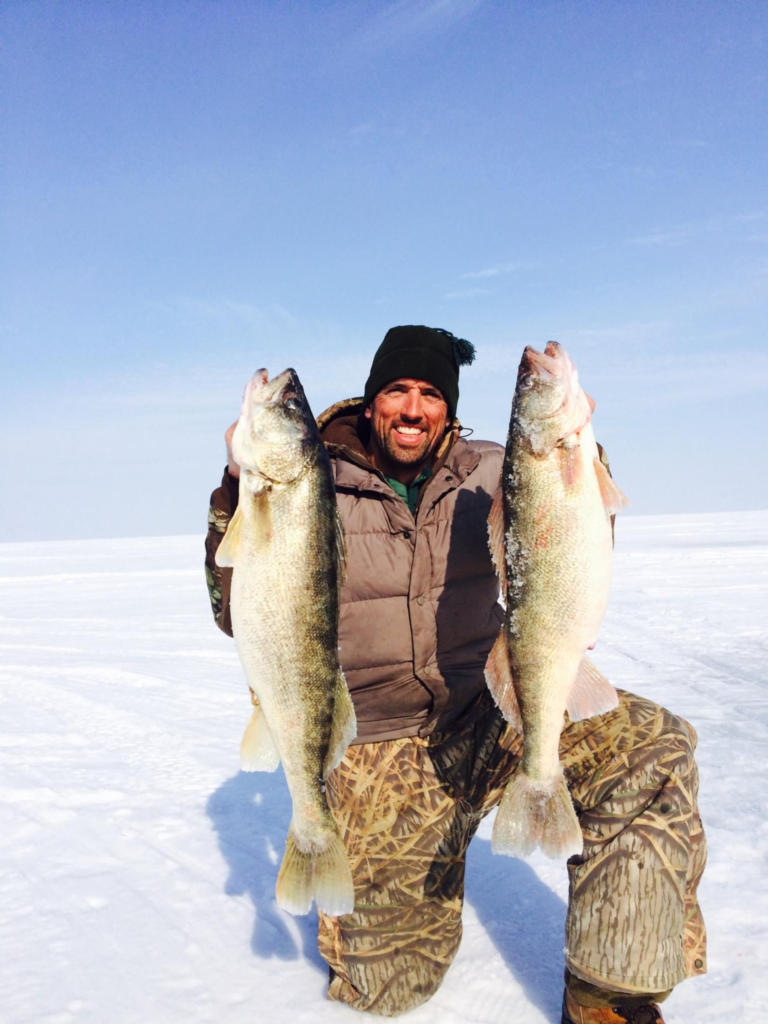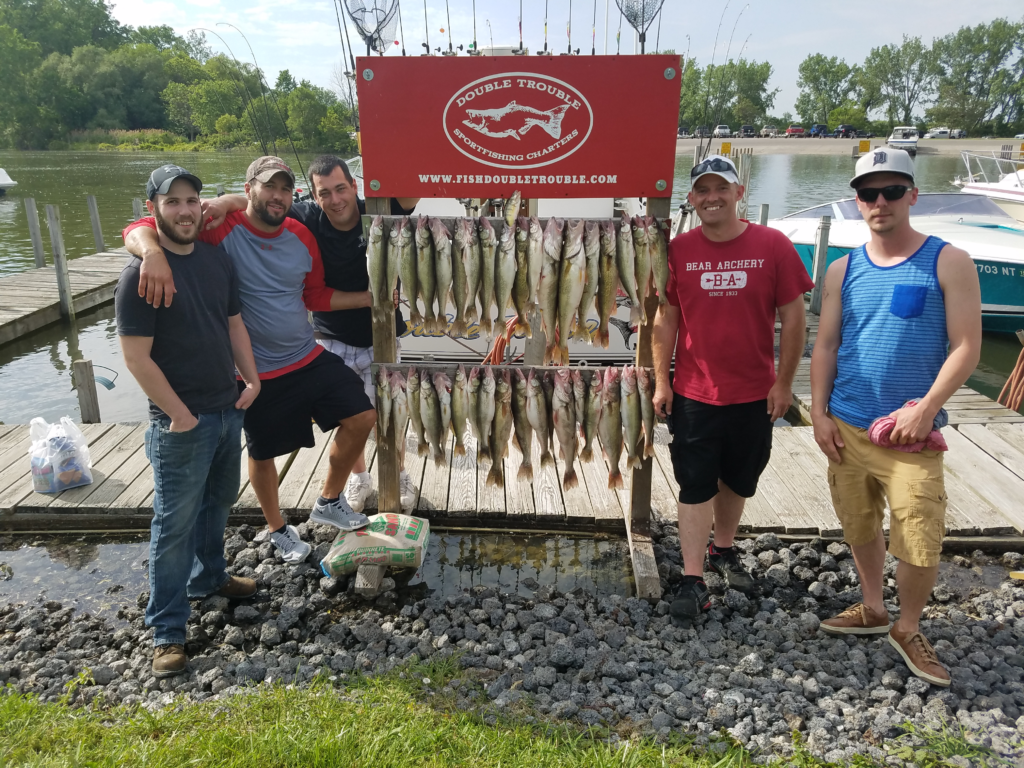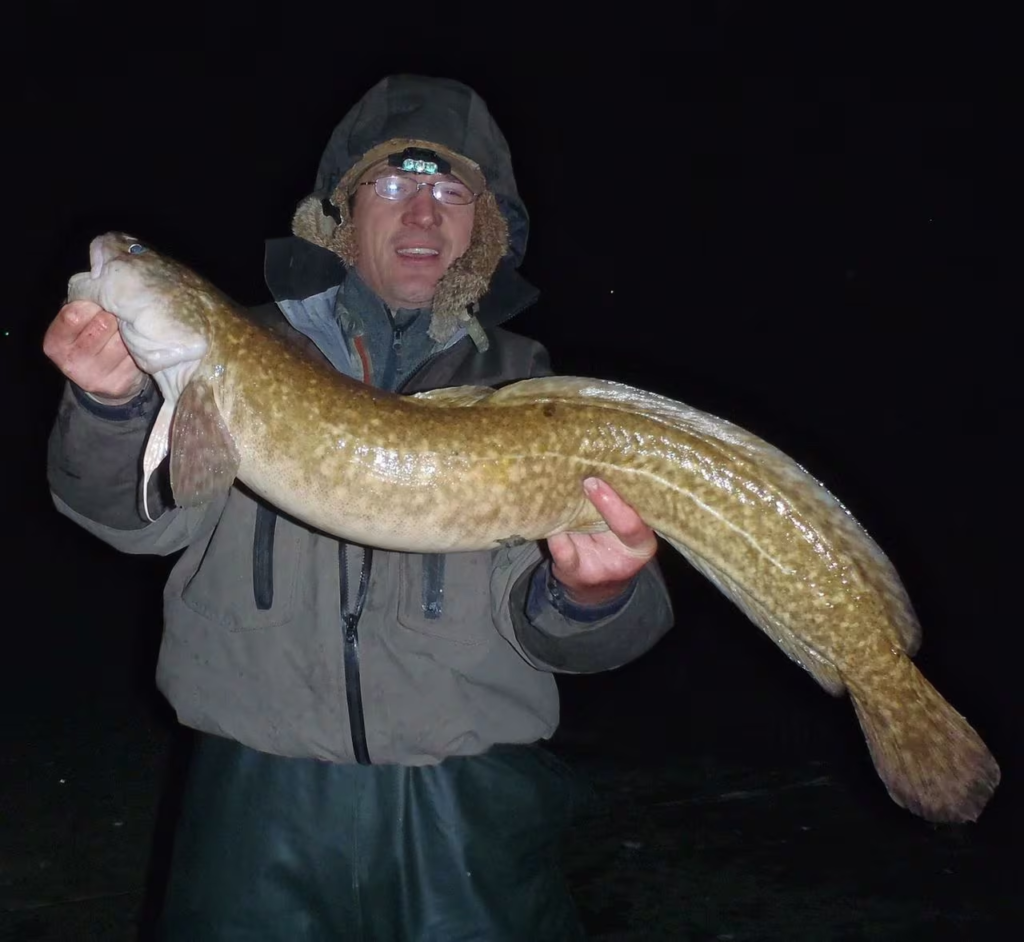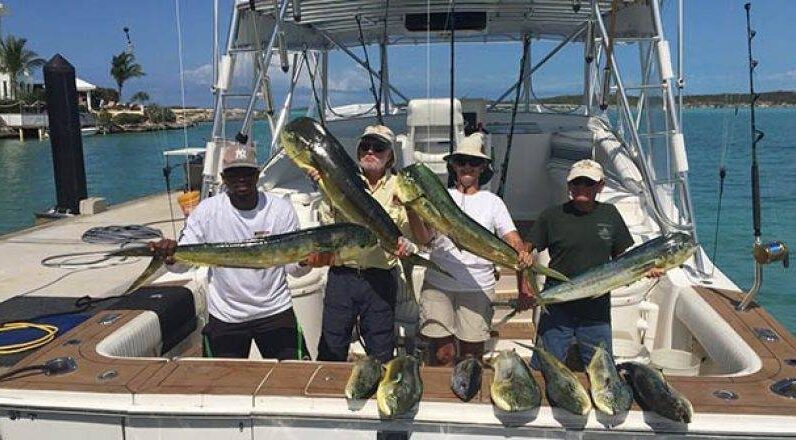Lake Erie, one of North America’s majestic Great Lakes, is a true angler’s paradise. Spanning an impressive 9,910 square miles, this vast body of water borders four U.S. states—Ohio, Pennsylvania, Michigan, and New York—while also extending into the Canadian province of Ontario. Renowned for its abundant fish species and diverse fishing opportunities, Lake Erie attracts thousands of anglers each year. Whether you’re targeting trophy walleye, perch, smallmouth bass, or any of the other plentiful species, the lake promises a thrilling experience for both novice and seasoned fishermen alike.
Cheerfulfisherman.com proudly presents Lake Erie as a premier fishing destination, offering exceptional opportunities throughout the year. During the summer months, trolling the lake’s expansive waters is a favored method for landing prized catches. As the seasons change, anglers can enjoy the serenity of fishing from the lake’s shores during the vibrant fall and spring months. When winter arrives and the lake freezes over, the thrill of ice fishing adds another exciting dimension to the Lake Erie experience. No matter the season, Lake Erie’s rich waters ensure that every fishing trip is filled with anticipation and the potential for unforgettable catches.
Table of Contents
- Introduction to Lake Erie Fishing
- Best Times of Year to Fish Lake Erie
- Top Fish Species in Lake Erie
- Walleye
- Yellow Perch
- Smallmouth Bass
- Steelhead Trout
- Other Species
- Fishing Locations on Lake Erie
- Ohio Waters
- Pennsylvania Waters
- New York Waters
- Canadian Waters
- Techniques for Fishing on Lake Erie
- Trolling
- Jigging
- Drift Fishing
- Shore Fishing
- Ice Fishing
- Recommended Gear for Lake Erie Fishing
- Rods and Reels
- Lures and Baits
- Tackle
- Electronics and Accessories
- Safety Tips and Regulations
- Fishing Licenses
- Bag Limits and Size Restrictions
- Boating Safety
- Weather Considerations
- Charter Services and Guided Trips
- Accommodation and Lodging Options
- Conclusion
1. Introduction to Lake Erie Fishing
Lake Erie is renowned as one of the best freshwater fishing destinations in North America. It has gained a reputation for being a “Walleye Capital of the World,” drawing anglers from across the globe to experience the thrill of catching one of these prized fish. But Lake Erie is not just about walleye; its diverse ecosystem supports a variety of species, making it a versatile fishing destination for both beginners and seasoned anglers.
The lake’s relatively shallow depth, compared to the other Great Lakes, contributes to its rich fish habitat. With an average depth of about 62 feet, Lake Erie warms quickly in the summer, fostering a productive environment for fish populations. The combination of nutrient-rich waters, ample food supply, and extensive spawning grounds has led to a thriving fishery.

2. Best Times of Year to Fish Lake Erie
Fishing in Lake Erie can be productive year-round, but certain seasons offer better opportunities depending on the species you’re targeting.
Spring (March to May): As the ice melts and water temperatures rise, fish become more active. This is an excellent time to target walleye, which move into shallower waters to spawn. Perch and smallmouth bass also become more active during the spring.
Summer (June to August): The summer months are prime time for walleye fishing. Anglers often use trolling techniques to cover large areas of water, with the central basin of Lake Erie being particularly productive. Smallmouth bass fishing is also excellent, especially around rocky structures and drop-offs.
Fall (September to November): Fall offers some of the best fishing on Lake Erie as fish prepare for winter. Walleye, perch, and steelhead trout are all active during this time. The cooler water temperatures bring fish closer to shore, making them more accessible to shore anglers.
Winter (December to February): Ice fishing on Lake Erie is popular, particularly for walleye and perch. However, ice conditions can be unpredictable, so it’s essential to check the thickness and safety of the ice before venturing out.
3. Top Fish Species in Lake Erie
Lake Erie boasts a diverse array of fish species, each offering unique challenges and rewards for anglers.
Walleye
Walleye are the most sought-after species in Lake Erie, and for good reason. These fish are known for their excellent taste and provide a thrilling fight when hooked. Walleye can be found throughout the lake, but the western and central basins are particularly productive.
Best Techniques: Trolling with crankbaits, spinners, and worm harnesses is highly effective for walleye. Night fishing can also be productive, especially in the spring and fall.
Size and Bag Limits: The size and bag limits for walleye vary by state and season, so it’s important to check local regulations before fishing.
Yellow Perch
Yellow perch are another popular target on Lake Erie. These fish are known for their delicate flavor and are often caught in large numbers. Perch fishing is particularly popular in the fall when schools of fish congregate in deeper waters.
Best Techniques: Jigging with minnows or small jigs is the preferred method for perch fishing. Drift fishing with live bait is also effective.
Size and Bag Limits: Perch are subject to size and bag limits that vary by location, so be sure to check the regulations for the area you’re fishing.
Smallmouth Bass
Smallmouth bass are prized for their fighting ability and are abundant in Lake Erie. These fish prefer rocky structures and drop-offs, making them a challenge to locate and catch.
Best Techniques: Casting or drifting with soft plastics, crankbaits, or live bait works well for smallmouth bass. Targeting rocky points and submerged structures is key to finding them.
Size and Bag Limits: Smallmouth bass are subject to specific size and bag limits depending on the state or province, so check the local regulations.
Steelhead Trout
Steelhead trout are a migratory species that enter Lake Erie’s tributaries in the fall and winter. They are known for their acrobatic fights and are highly sought after by fly and spin anglers.
Best Techniques: Casting spoons, spinners, or fly fishing with streamers and egg patterns are effective methods for steelhead. Targeting river mouths and tributaries during the fall and winter months yields the best results.
Size and Bag Limits: Steelhead are subject to different regulations depending on the location, so be sure to check the specific rules for the area.
Other Species
Lake Erie is home to many other fish species, including largemouth bass, northern pike, muskellunge, white bass, and various panfish. Each species offers its own unique challenges and rewards for anglers.

4. Fishing Locations on Lake Erie
Lake Erie’s vast size means that there are countless fishing spots to explore. Whether you’re fishing from a boat, the shore, or a pier, there’s a location to suit every angler’s preference.
Ohio Waters
The Ohio shoreline of Lake Erie is dotted with numerous fishing hotspots. From the Western Basin near the Bass Islands to the deeper waters of the Central Basin, Ohio offers some of the best fishing on the lake.
- Western Basin: This area is shallow and full of islands, making it ideal for walleye and smallmouth bass. The Bass Islands, Kelleys Island, and the waters around Sandusky are popular fishing areas.
- Central Basin: As the lake deepens, the Central Basin becomes a prime location for walleye, perch, and steelhead. The waters off Cleveland and Lorain are particularly productive.
- Western and Eastern Reef Complex: Located near the Lake Erie islands, these areas are known for their excellent walleye fishing.
Pennsylvania Waters
Pennsylvania’s 76-mile stretch of Lake Erie shoreline offers excellent fishing opportunities, especially for steelhead trout.
- Presque Isle Bay: This bay is one of the top fishing spots in Pennsylvania, known for its warmwater fish species such as bass, pike, and perch. During the fall, steelhead enter the bay and provide thrilling fishing opportunities.
- Elk Creek and Walnut Creek: These tributaries are famous for their steelhead runs, making them a destination for anglers looking to catch this prized fish.
- Shoreline Fishing: The Pennsylvania shoreline offers numerous public access points for shore fishing, making it an accessible destination for all anglers.
New York Waters
New York’s portion of Lake Erie is known for its deep waters and excellent smallmouth bass fishing.
- Buffalo Harbor: This area provides access to both the shallow waters of the Eastern Basin and the deeper waters of the Central Basin, offering opportunities to catch a variety of species.
- Dunkirk and Barcelona Harbors: These harbors are popular launching points for anglers targeting walleye and smallmouth bass. The nearby reefs and drop-offs provide excellent fishing grounds.
- Cattaraugus Creek: This creek is a popular spot for steelhead fishing, especially during the fall and winter months.
Canadian Waters
The Canadian side of Lake Erie, particularly the waters near Ontario, is known for its productive fishing grounds.
- Long Point Bay: Located on the northern shore of Lake Erie, this area is known for its bass, pike, and perch fishing. The shallow waters and abundant weed beds make it a haven for warmwater species.
- Port Stanley: This area is popular for walleye and perch fishing, with numerous charters operating out of the harbor.
- Point Pelee National Park: This park offers excellent shore fishing opportunities, particularly for bass and perch. The park’s unique geography creates a variety of fishing environments, from shallow marshes to deeper lake waters.

5. Techniques for Fishing on Lake Erie
Lake Erie offers a wide range of fishing techniques, each suited to the specific conditions and species you’re targeting.
Trolling
Trolling is one of the most popular and effective techniques for catching walleye on Lake Erie. By covering large areas of water with lures or bait, anglers can locate schools of fish and entice them to bite.
- Crankbaits and Spinners: These lures are commonly used for trolling, with colors and patterns that mimic the forage fish that walleye feed on. Trolling speeds typically range from 1 to 3 miles per hour, depending on the conditions and the behavior of the fish.
- Downriggers and Planer Boards: These tools help control the depth and spread of your lures. Downriggers allow you to fish at specific depths, while planer boards spread your lines away from the boat, covering more water and reducing the chance of spooking the fish.
- Spoons and Worm Harnesses: These are also effective trolling options, particularly during the warmer months when walleye move to deeper waters. Spoons mimic the erratic movement of injured baitfish, while worm harnesses combine the visual appeal of a spinner with the irresistible scent of live bait.
Jigging
Jigging is another productive technique on Lake Erie, especially for targeting walleye, perch, and smallmouth bass. This method involves vertically moving a jig up and down in the water column, enticing fish to strike.
- Jigs and Soft Plastics: When jigging, use a combination of lead jigs and soft plastic baits, such as twister tails, shad bodies, or grub worms. The key is to match the jig size and color to the local baitfish and adjust your jigging speed based on the fish’s activity level.
- Blade Baits: These metal lures are excellent for jigging in deeper waters. Their vibration and flash attract predatory fish, making them ideal for walleye and bass.
- Ice Jigging: During the winter months, ice jigging becomes the go-to technique for targeting walleye and perch through the ice. Small jigs tipped with minnows or wax worms work best, with a slow and subtle jigging motion to entice lethargic fish.
Drift Fishing
Drift fishing allows you to cover water while presenting your bait or lures at various depths. This technique is particularly effective when targeting walleye and perch in the central and eastern basins of Lake Erie.
- Drifting with Live Bait: Nightcrawlers, minnows, and leeches are popular live bait choices when drift fishing. Rig your bait on a bottom bouncer or a drop-shot rig to keep it near the lake bed, where walleye and perch often feed.
- Drifting with Artificial Lures: Soft plastics, spinners, and spoons can also be used while drift fishing. Adjust the weight of your rig and the speed of your drift to maintain contact with the bottom, where fish are likely to be found.
Shore Fishing
Shore fishing on Lake Erie is accessible and rewarding, especially during the spring and fall when fish move closer to shore. Many public access points, piers, and jetties along the lake offer excellent fishing opportunities.
- Casting Lures: Crankbaits, spoons, and jigs are effective for shore fishing. Casting and retrieving these lures along drop-offs, weed edges, and rocky shorelines can produce walleye, bass, and other species.
- Fishing with Live Bait: Worms, minnows, and cut bait can be fished from shore using slip bobbers or bottom rigs. Adjust the depth of your bait to target different species, such as perch or catfish.
- Night Fishing: Walleye are particularly active at night, making shore fishing after dark highly productive. Use glow-in-the-dark lures or add a lighted bobber to your setup for increased visibility and attraction.
Ice Fishing
Ice fishing on Lake Erie is a unique experience that draws anglers from across the region. The winter months offer opportunities to catch walleye, perch, and even the occasional steelhead through the ice.
- Ice Augers: To begin ice fishing, you’ll need an ice auger to drill holes in the ice. Manual, electric, or gas-powered augers can be used, depending on the thickness of the ice and your personal preference.
- Tip-Ups and Jigging Rods: Tip-ups are a popular ice fishing tool, allowing you to fish multiple holes simultaneously. When a fish takes the bait, the flag on the tip-up pops up, signaling a bite. Jigging rods, on the other hand, offer a more hands-on approach, allowing you to actively work your bait or lure through the water column.
- Ice Safety: Always prioritize safety when ice fishing on Lake Erie. Check ice thickness regularly, avoid areas with strong currents, and carry safety equipment such as ice picks and flotation devices.

6. Recommended Gear for Lake Erie Fishing
Having the right gear is crucial for a successful fishing trip on Lake Erie. Here’s a breakdown of essential equipment for different fishing methods and species.
Rods and Reels
- Trolling Rods: Medium to medium-heavy rods, around 7-8 feet in length, are ideal for trolling on Lake Erie. Pair these rods with baitcasting reels that have strong drag systems and ample line capacity for deep water trolling.
- Jigging Rods: For jigging, use a medium-light to medium-action spinning rod, typically 6-7 feet long. Spinning reels with smooth drags and a fast retrieve rate are preferred, allowing you to quickly reel in your catch.
- Drift Fishing Rods: Similar to jigging rods, a medium-action spinning rod works well for drift fishing. A longer rod, around 7-8 feet, provides better control and line management when drifting.
- Ice Fishing Rods: Ice fishing rods are short, usually 24-36 inches in length, with sensitive tips to detect light bites. Pair them with small spinning reels or inline reels designed for ice fishing.
Lures and Baits
- Crankbaits and Minnow Baits: These are essential for trolling and casting, mimicking the natural prey of walleye, bass, and other predatory fish. Choose lures with a variety of diving depths and colors to match the conditions and target species.
- Soft Plastics: Soft plastic baits, such as swimbaits, grubs, and tubes, are versatile and effective for jigging, drifting, and shore fishing. Experiment with different colors and sizes to find what works best on a given day.
- Jigs and Blade Baits: These are staples for jigging on Lake Erie. Choose jigs with a range of weights to fish different depths and currents, and consider blade baits for their vibration and flash, which attract fish from a distance.
- Live Bait: Nightcrawlers, minnows, and leeches are popular live bait options for Lake Erie. Keep your bait fresh and lively to increase your chances of success, and use appropriate rigs such as drop-shot or bottom-bouncing setups.
Tackle
- Terminal Tackle: Stock up on hooks, sinkers, swivels, and leader material suited to the species you’re targeting. For walleye and perch, light fluorocarbon leaders are often preferred for their low visibility.
- Fishing Line: Use braided line for trolling and jigging, as it offers strength and sensitivity with minimal stretch. Monofilament or fluorocarbon lines work well for drift fishing and shore fishing, offering a balance of strength and abrasion resistance.
- Net: A sturdy landing net with a long handle is essential for safely landing fish from a boat or the shore. Choose a net with a rubber or knotless mesh to reduce damage to the fish.

Electronics and Accessories
- Fish Finders: A good fish finder is invaluable on Lake Erie, helping you locate schools of fish, structure, and changes in water depth. Look for models with GPS, sonar, and mapping capabilities to enhance your fishing experience.
- GPS Devices: GPS units or smartphone apps with navigation features are important for safely navigating the vast waters of Lake Erie, especially in low visibility or rough conditions.
- Weather Apps: Keep an eye on weather conditions with reliable weather apps or marine radios. Lake Erie’s weather can change quickly, and staying informed will help you avoid dangerous situations.
- Tackle Boxes and Storage: Organize your lures, baits, and tackle in waterproof tackle boxes or bags. Keeping your gear sorted and easily accessible will save you time on the water.
7. Safety Tips and Regulations
Fishing on Lake Erie requires awareness of safety precautions and adherence to local regulations to ensure a safe and enjoyable experience.
Fishing Licenses
- U.S. Fishing Licenses: If you’re fishing on the U.S. side of Lake Erie, you’ll need a fishing license for the state you’re in—Ohio, Pennsylvania, Michigan, or New York. Each state has different licensing requirements, and you may need additional permits for specific areas or species.
- Canadian Fishing Licenses: Anglers fishing in Canadian waters of Lake Erie must have an Ontario fishing license. Ontario offers different types of licenses, including conservation licenses with lower catch limits.
- Reciprocal Agreements: Some states have reciprocal agreements that allow anglers to fish across state lines with a single license. Check local regulations to see if this applies to your fishing area.
Bag Limits and Size Restrictions
- Walleye: Bag limits for walleye vary by state and season, with most states setting limits between 4 and 6 fish per day. Size restrictions are also common, typically requiring walleye to be at least 15 inches long.
- Yellow Perch: Perch limits range from 25 to 50 fish per day, depending on the state or province. There are usually no size restrictions, but it’s important to check local regulations.
- Smallmouth Bass: Many areas have size restrictions on smallmouth bass, often requiring fish to be at least 12 to 14 inches long. Bag limits typically range from 3 to 5 fish per day.
- Steelhead Trout: Steelhead are often subject to stricter regulations, with daily limits usually set at 2 or 3 fish. Size restrictions also apply, with most areas requiring steelhead to be at least 20 inches long.
Boating Safety
- Life Jackets: Always wear a life jacket when boating on Lake Erie. The lake’s conditions can change rapidly, and wearing a life jacket is the simplest way to ensure your safety.
- Navigation Lights: Ensure your boat is equipped with functioning navigation lights, especially if you plan to fish early in the morning, late in the evening, or at night.
- Weather Monitoring: Regularly check weather forecasts and be aware of changing conditions. Strong winds and storms can create dangerous waves on Lake Erie, so it’s crucial to head to shore if the weather deteriorates.
- Emergency Equipment: Carry essential safety equipment, such as a first aid kit, fire extinguisher, flares, and a VHF radio, on your boat. These items can be lifesaving in an emergency.
Weather Considerations
- Wind and Waves: Lake Erie is known for its rapidly changing weather, and high winds can create large, dangerous waves. Monitor wind speeds and wave forecasts, and avoid fishing on days with high wind advisories.
- Temperature Drops: Even in the summer, sudden temperature drops can occur, leading to hypothermia if you’re unprepared. Dress in layers and bring extra clothing in case conditions change.
- Fog: Dense fog can quickly reduce visibility on Lake Erie, making navigation difficult. If you encounter fog, slow down, use your GPS and navigation lights, and consider heading to shore until the fog clears.
8. Charter Services and Guided Trips
For anglers new to Lake Erie or those looking to enhance their fishing experience, charter services and guided trips offer a convenient and effective way to explore the lake.
- Charter Services: Numerous charter companies operate on Lake Erie, offering half-day, full-day, or multi-day fishing trips. These charters are equipped with experienced captains, fishing gear, and electronic equipment to ensure a successful outing. Charters can target specific species, such as walleye or perch, or provide a more general fishing experience.
- Guided Trips: For a more personalized experience, consider hiring a fishing guide. Guides can offer valuable local knowledge, teach you new techniques, and help you locate fish. Many guides also provide all necessary equipment, making it easy for you to focus on fishing.
- Booking Tips: When booking a charter or guided trip, consider the time of year, the species you want to target, and the specific areas of Lake Erie you’d like to explore. It’s also a good idea to read reviews and ask for recommendations to ensure you choose a reputable service.

9. Accommodation and Lodging Options
Lake Erie’s extensive shoreline is dotted with a variety of accommodation options, from rustic cabins to luxury resorts. Whether you’re planning a weekend getaway or an extended fishing trip, there are plenty of places to stay.
Lakeside Resorts and Hotels
- Luxury Resorts: For those looking to combine fishing with relaxation, luxury resorts offer comfortable accommodations, fine dining, and spa services. Many resorts are located near popular fishing areas, providing easy access to the lake.
- Family-Friendly Hotels: Many hotels along Lake Erie cater to families, offering amenities such as swimming pools, complimentary breakfast, and proximity to local attractions. These hotels are often located near public fishing piers and boat launches.
- Pet-Friendly Options: If you’re traveling with a pet, look for pet-friendly accommodations that welcome your four-legged companions. Many lakeside cabins and cottages allow pets, making it easy to bring them along on your fishing adventure.
Cabins and Cottages
- Lakeside Cabins: Renting a cabin along Lake Erie’s shoreline provides a cozy and convenient base for your fishing trip. Many cabins come with private docks, fire pits, and full kitchens, allowing you to enjoy a self-catered stay.
- Rustic Cottages: For a more rustic experience, consider staying in a cottage near the lake. These accommodations often offer a quieter, more secluded atmosphere, perfect for anglers looking to escape the hustle and bustle of daily life.
- Vacation Rentals: Websites like Airbnb and Vrbo offer a wide range of vacation rentals along Lake Erie. From modern homes to historic cottages, there’s something to suit every taste and budget.
Campgrounds and RV Parks
- Tent Camping: For a more immersive outdoor experience, consider camping at one of Lake Erie’s many campgrounds. Tent sites are available at state parks and private campgrounds, offering amenities such as restrooms, showers, and fire rings.
- RV Parks: If you’re traveling with an RV, there are numerous RV parks along Lake Erie’s shoreline. These parks typically offer full hookups, dump stations, and easy access to the lake. Some even provide fishing piers and boat ramps on-site.
- State Parks: Many state parks along Lake Erie offer both tent and RV camping. These parks often feature scenic trails, beaches, and picnic areas, making them ideal for family outings.
10. Conclusion
Fishing in Lake Erie is a rewarding experience that offers something for every angler. Whether you’re targeting trophy walleye, abundant perch, or feisty smallmouth bass, the lake’s diverse fishing opportunities, stunning scenery, and rich history make it a must-visit destination for anglers of all skill levels.
By understanding the best times to fish, the top locations, and the right techniques, you can maximize your chances of success on Lake Erie. Additionally, being well-prepared with the right gear, knowledge of local regulations, and a focus on safety will ensure that your fishing trip is not only successful but also enjoyable.
Whether you’re fishing from a boat, the shore, or through the ice, Lake Erie’s waters are teeming with fish waiting to be caught. So pack your gear, head to the lake, and experience the thrill of fishing on one of North America’s premier freshwater destinations.






